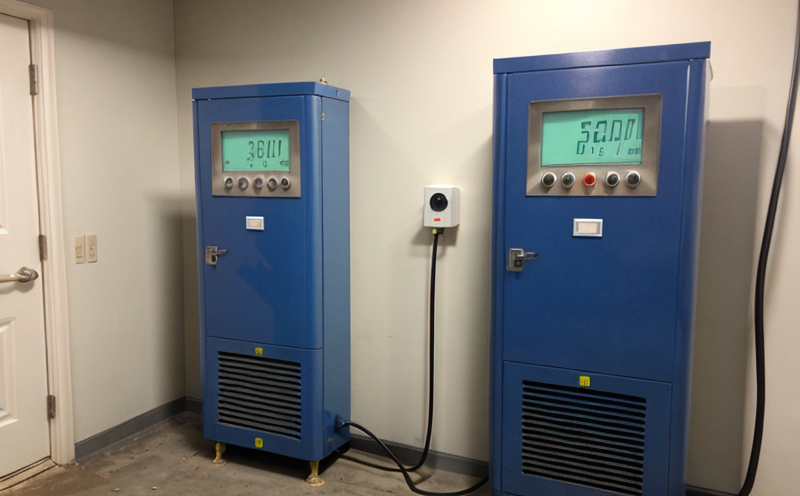NIOSH 0300 Carbon Monoxide Measurement in Mines Testing
The NIOSH (National Institute for Occupational Safety and Health) 0300 standard is a critical benchmark for measuring carbon monoxide (CO) levels within mining environments. This testing service ensures that miners are not exposed to dangerous CO concentrations, which can lead to severe health risks including asphyxiation, brain damage, and even death in high-exposure scenarios.
The NIOSH 0300 method is widely recognized for its accuracy and reliability, especially in the mining sector where ventilation systems must be meticulously monitored. This standard applies to both underground and surface mines, ensuring that any CO present does not exceed safe levels as defined by OSHA (Occupational Safety and Health Administration).
The testing process involves multiple steps: first, a sample of mine air is collected using specialized equipment designed for this purpose. The sample is then analyzed in a controlled laboratory environment where the concentration of CO is measured precisely according to NIOSH 0300 guidelines.
Accurate measurement of carbon monoxide levels is essential not only for worker safety but also for compliance with regulatory requirements set forth by OSHA and other relevant bodies. By adhering to these standards, mining operations can maintain a safe working environment while minimizing the risk of accidents due to CO poisoning.
The importance of this testing cannot be overstated; it plays a pivotal role in protecting miners' health and safety. Regular monitoring ensures that any issues with ventilation systems are addressed promptly, preventing potentially fatal incidents. This service is crucial for maintaining compliance with OSHA regulations while also promoting best practices within the mining industry.
For quality managers, compliance officers, R&D engineers, and procurement professionals involved in this sector, understanding the nuances of NIOSH 0300 testing can be invaluable. It provides insights into how to implement effective safety measures that go beyond mere regulatory adherence to fostering a culture of proactive risk management.
Understanding the technical aspects of CO measurement is key not only for those directly responsible for mine operations but also for stakeholders who rely on these environments for resource extraction and processing. The precision demanded by NIOSH standards ensures that every aspect of the testing process contributes towards creating safer working conditions.
Why It Matters
The measurement of carbon monoxide in mines using the NIOSH 0300 standard is crucial for several reasons. Firstly, it helps ensure that miners are not exposed to harmful levels of CO, which can lead to serious health issues such as headaches, dizziness, and nausea at lower concentrations, progressing up to unconsciousness or death if exposure continues.
Compliance with NIOSH 0300 is essential for maintaining workplace safety standards set by OSHA. This includes regular monitoring of CO levels in mine atmospheres using appropriate sampling techniques followed by accurate analysis in a controlled laboratory setting. The results provide actionable data that can inform necessary adjustments to ventilation systems and operational procedures.
For quality managers, compliance officers, R&D engineers, and procurement professionals involved in mining operations, understanding the implications of NIOSH 0300 testing is vital. It allows them to make informed decisions about safety protocols, equipment selection, and process improvements aimed at reducing risks associated with CO exposure.
The significance extends beyond just compliance; it represents a commitment to worker health and well-being. By adhering to these standards, mining companies demonstrate their dedication to creating safe working environments that prioritize employee welfare.
Applied Standards
| Standard Code | Description |
|---|---|
| NIOSH 0300 | Method for the Determination of Carbon Monoxide in Air by Gas Chromatography. |
| ISO/IEC 17025 | General Requirements for the Competence of Testing and Calibration Laboratories. |
The NIOSH 0300 standard is complemented by other international standards such as ISO/IEC 17025, which ensures that laboratories performing this testing adhere to rigorous quality control procedures. These combined standards form a robust framework for ensuring accurate and reliable carbon monoxide measurements in mining environments.
Benefits
- Ensures worker safety by detecting potentially harmful CO levels early
- Promotes compliance with OSHA regulations regarding mine ventilation
- Facilitates informed decision-making for quality managers and R&D engineers
- Reduces the risk of accidents caused by CO poisoning in mining operations
- Supports best practices in occupational safety and health management
- Provides valuable data for continuous improvement of mine ventilation systems





